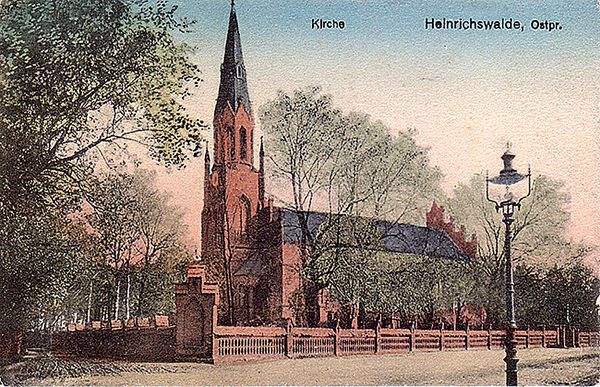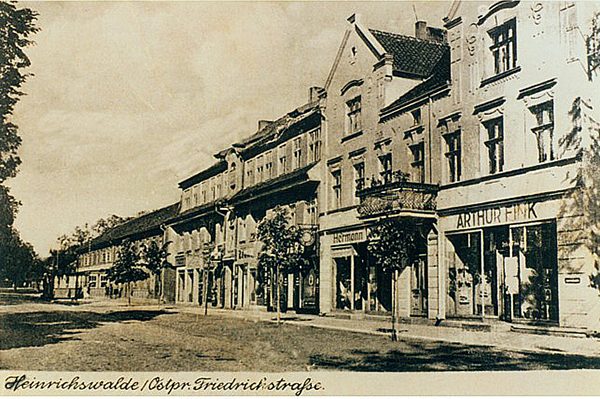Heinrichswalde (Slavsk) - Past and Present
The small town of Slavsk (former Heinrichswalde/ Heinrichswalde ) is the district center. Under the Germans after 1938, the district was called Elchniederung (Elch Lowland), and before that simply Niederung (Lowland). Heinrichswalde owes its name (Heinrich's forest) to a certain huntsman Heinrich Ehrentreich from Halle, to whom the Great Elector of Brandenburg Friedrich Wilhelm I (who was also the Duke of Prussia) granted more than 800 hectares of hunting grounds in these parts in 1657. So these places were, frankly speaking, not very populated. But there was plenty of game here, and not only elk, but also deer, bison, and wild boar.
At the end of the 17th century, a parish was formed in Heinrichswald and a wooden church was built, later rebuilt, as the old one could no longer accommodate all the parishioners. In the second half of the 19th century, the church was dismantled due to its dilapidation and in its place in 1867-1869 a new three-aisled brick building in the neo-Gothic style was erected (the construction costs amounted to 39,000 Reichsthalers), which has survived to this day. The consecration of the new church took place on October 15, 1869. The organ for the church was made by the East Prussian master Johann Rohn from Wormditt (now Orneta in Poland).

During the Seven Years' War ( 1756-1763 ) there were no military actions here. In January 1761, due to a strong storm that destroyed the protective dams on the coast of the Curonian Lagoon, Heinrichswald and the surrounding area were flooded. In 1818, the settlement became the center of the kreis (district), a district administration, a court, a financial administration, a post office appeared here, hotels and shops were built on the central street Friedrichstrasse, and a weekly fair was held. In 1891, a railway appeared, connecting Heinrichswald with Tilsit and Königsberg. A hospital was built. But the surrounding area still remained covered with significant forest areas, where the then German elite loved to hunt.

During the First World War, Heinrichswald was occupied by Russian troops for several days (the 270th Gatchina Infantry Regiment, part of the 1st Army of General P. Rannenkampf). Two mass graves have been preserved, in which Russian and German soldiers who died at that time are buried (one of them is located near the hospital, and the second is at the fork in the road Timiryazevo - Rzhevskoye). But Heinrichswald itself was not damaged by the fighting.
In 1939, Heinrichswalde received city status. But in terms of population (3,467 people in 1939), it was only second in the region, behind Past and Present: Kaukemen — Yasnoe
